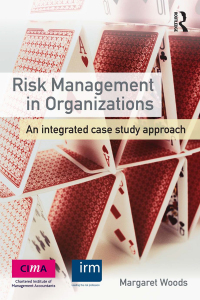Answered step by step
Verified Expert Solution
Question
1 Approved Answer
The Balance Sheet provides information about _____________, ____________ and ______________. Cash paid this is owed to an individual reduces a _____________ account. Supplies purchases increase
- The Balance Sheet provides information about _____________, ____________ and ______________.
- Cash paid this is owed to an individual reduces a _____________ account.
- Supplies purchases increase a _____________ account and reduces a ____________ account.
- Complete the following table:
| Account | Debit | Credit |
|
| Increase | Decrease |
|
| Increase | Decrease |
|
| Decrease | Increase |
|
| Decrease | Increase |
|
| Decrease | Increase |
- Which of the following is not a Liability?
- Money owed to bank
- Cash borrowed from a friend
- Money borrowed from bank to buy building
- Money paid to purchase stock investments
- Finish the equation: _______________ - ________________= Net Income.
- Which of the following statements is false?
- When assets decrease, it is a credit.
- When liabilities decrease, it is a debit.
- When expenses increase it is a credit.
- When revenues decrease, it is a debit
- Which of the following statements is true?
- When you receive a loan from the bank, you increase an asset account.
- When you pay cash to buy supplies, you increase a liability account.
- When you purchase investments, you increase a revenue account.
- When you pay back the loan from the bank, you increase a liability account.
- Identify the following accounts as an Asset, Liability, Revenue or Expense
- Salaries Payable
- Fees earned from providing tax services
- Advertising Bill
- Long-term debt
- Accrued Revenue
- Prepaid Rent
- Land
- Supplies used during the month
- Notes Receivable
- Inventory
- Cash
- Vehicles
- Cash paid for a bill that is not yet due
- Payment received from customer
- Fees paid to bank
- Which of the following is not a current asset?
- Cash
- Accounts payable
- Inventory
- Property, plant, and equipment
- What is the entry on the balance sheet when a company borrows a bank loan of $1,000?
- $1,000 credit in current liabilities; $1,000 debit in current assets
- $1,000 credit in current liabilities; $1,000 debit in non-current assets
- $1,000 credit in non-current liabilities; $1,000 debit in current assets
- $1,000 credit in non-current liabilities; $1,000 debit in non-current assets
- What happens to the balance sheet when a company makes sales of $500, of which $300 is paid in cash and $200 is sold on credit?
- $300 debit in cash; $200 debit in accounts receivable
- $300 credit in cash; $200 credit in accounts receivable
- $300 debit in cash; $200 debit in accounts payable
- $300 credit in cash; $200 credit in accounts payable
- What happens to the balance sheet when a company pays salaries of $5,000?
- $5,000 credit in cash; $5,000 debit in accounts payable
- $5,000 credit in cash; $5,000 debit in equity
- $5,000 debit in cash; $5,000 credit in equity
- $5,000 credit in cash; $5,000 debit in accounts receivable
- If at the end of the month, the liabilities total $18,000, and equity totals $32,000, then what must be the total of the assets?
- $14,000
- $18,000
- $32,000
- $50,000
- None of the above
- The total assets and total liabilities of a firm are reported on which of the following?
- Income statement
- Balance sheet
- Statement of cash flows
- Statement of owner's equity
- None of the above
Step by Step Solution
There are 3 Steps involved in it
Step: 1

Get Instant Access to Expert-Tailored Solutions
See step-by-step solutions with expert insights and AI powered tools for academic success
Step: 2

Step: 3

Ace Your Homework with AI
Get the answers you need in no time with our AI-driven, step-by-step assistance
Get Started


